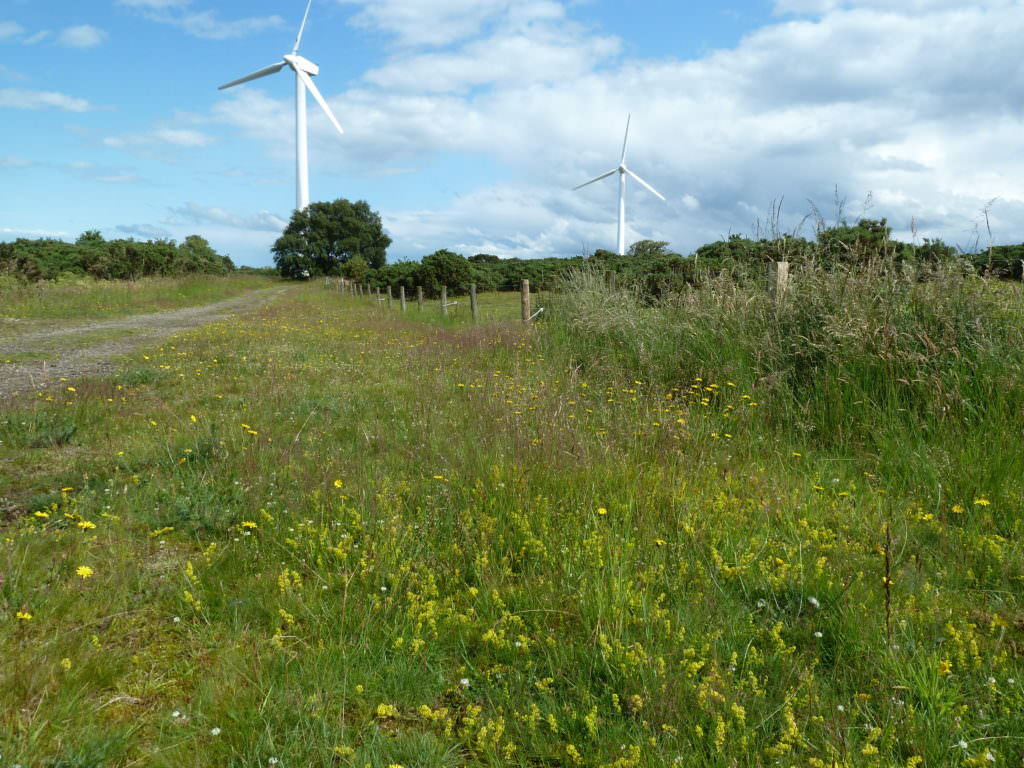
Species rich grassland (Scottish Biodiversity List)
Maintaining and protecting biodiversity in our world is of international importance and concern and the strategy is to make sure that what happens on the ground in every locality of the earth helps with this mammoth task. To that end FHT commissioned a 2020 Local Biodiversity Action Plan that highlighted what habitats and species are particularly rare and important to conserve on the land it manages and from that it was clear that the dune habitat is of prime importance. How can we maintain and enhance this diversity?
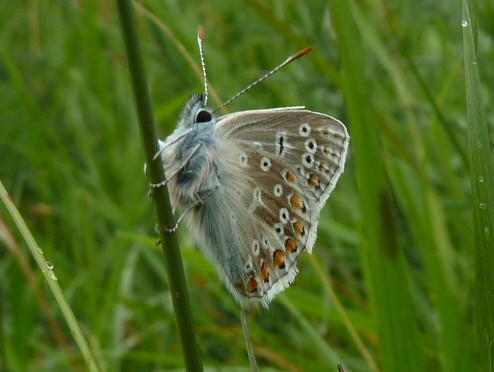
Common blue
The Trust has engaged Sean Reed, a local ecologist, to plan our dune restoration work. The following outline gives a little more detail on the Project. Sean introduced our land management group to the Dynamic Dunescapes publication which has helped inform our thinking and which some readers may find interesting and informative.
Jonathan Caddy
FHT Chair
Project Outline
by Sean Reed MCIEEM
A very special place
Findhorn sand dune ecosystem, once part of the second largest in Europe, is of national importance for lichens, insects and fungi. Many species found here are found at only a handful of places in the UK. For example, Findhorn dunes have the only British record for one species of fungus and the dunes are the most important site for a moth which is found at only one other site in Scotland. Coastal vegetated shingle is included on the Scottish government’s Scottish Biodiversity List of priority habitats.

Dune heath
Under threat
Natural sand dune landscapes are now rarely seen in Europe. They have been lost through the establishment of forestry plantations, housing and industrial developments, caravan parks and golf courses.
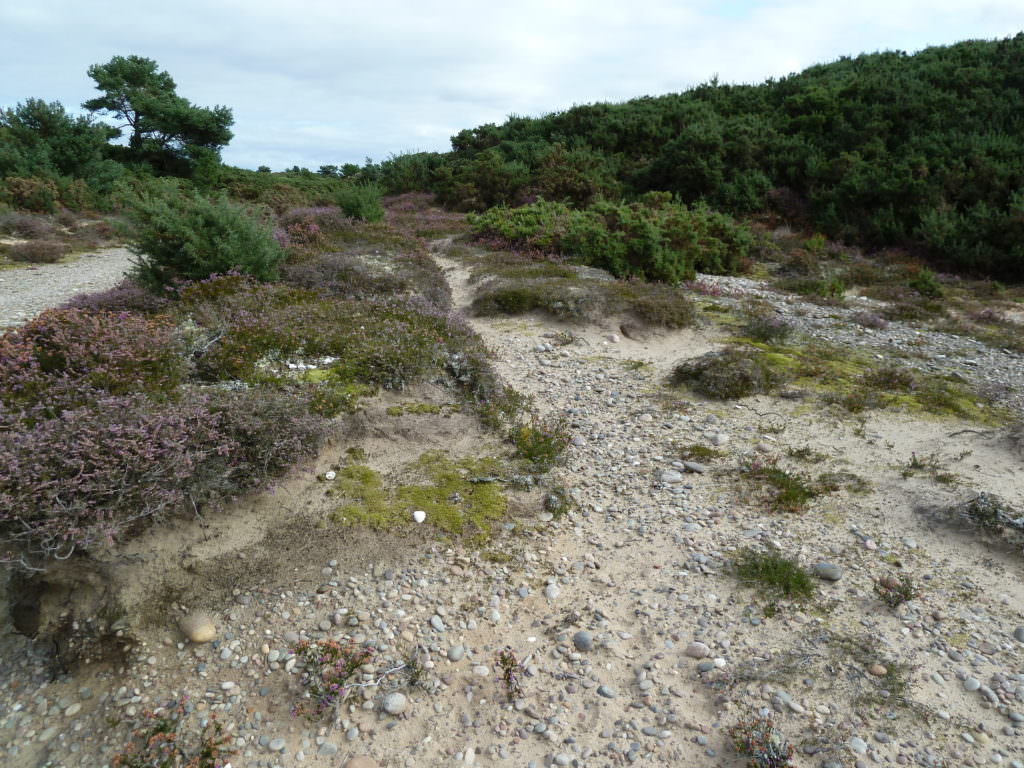
Dune heath, sand
Over-stabilisation, through increasing vegetation cover, is a major threat to UK dunes. At Findhorn, dynamic open sand dune habitats, dependent on a plentiful supply of mobile sand, are being lost to gorse and tree encroachment. While this landscape may look wild and natural, it is actually the result of reduced wind speed, caused by the historic construction of houses and planting of woodland. This wind-sheltering effect has allowed gorse to spread, further restricting the natural flow of the wind. Pine trees, from seeds blown from adjoining plantation woodland, add to the problem, so that without action much of the special wildlife interest of the area will soon disappear.
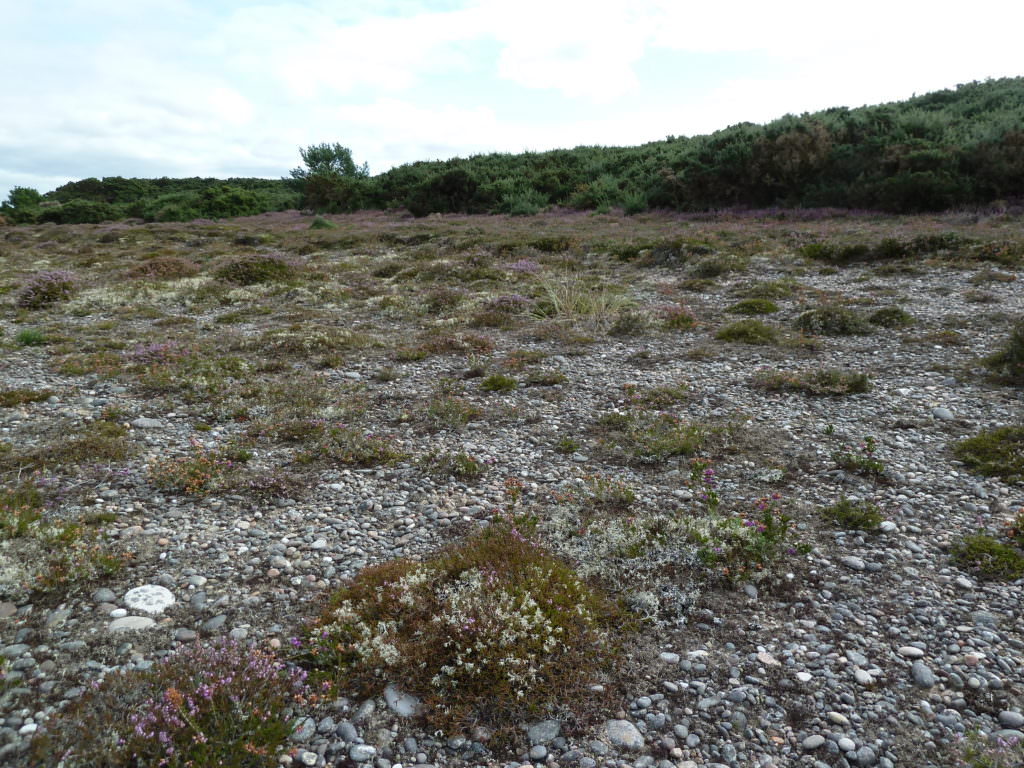
Dune heath, shingle. Scottish Biodiversity List
Our responsibility
The Findhorn Hinterland Trust manages thirty-five hectares of the Findhorn dunes, including ten hectares of woodland. Most of the dune heath is now covered by gorse. Rare sand and shingle habitats, the ‘jewels in the crown’ of Hinterland’s biodiversity, are dependent on regular hand clearance of scrub for their continued existence.
Sand dune habitats, and many of the species that depend upon them for survival, are included on the Scottish Biodiversity List. These are the highest priorities for conservation action, helping to deliver on international targets for cooperative biodiversity recovery. We have a duty to respond to the biodiversity crisis on the land which we care for.
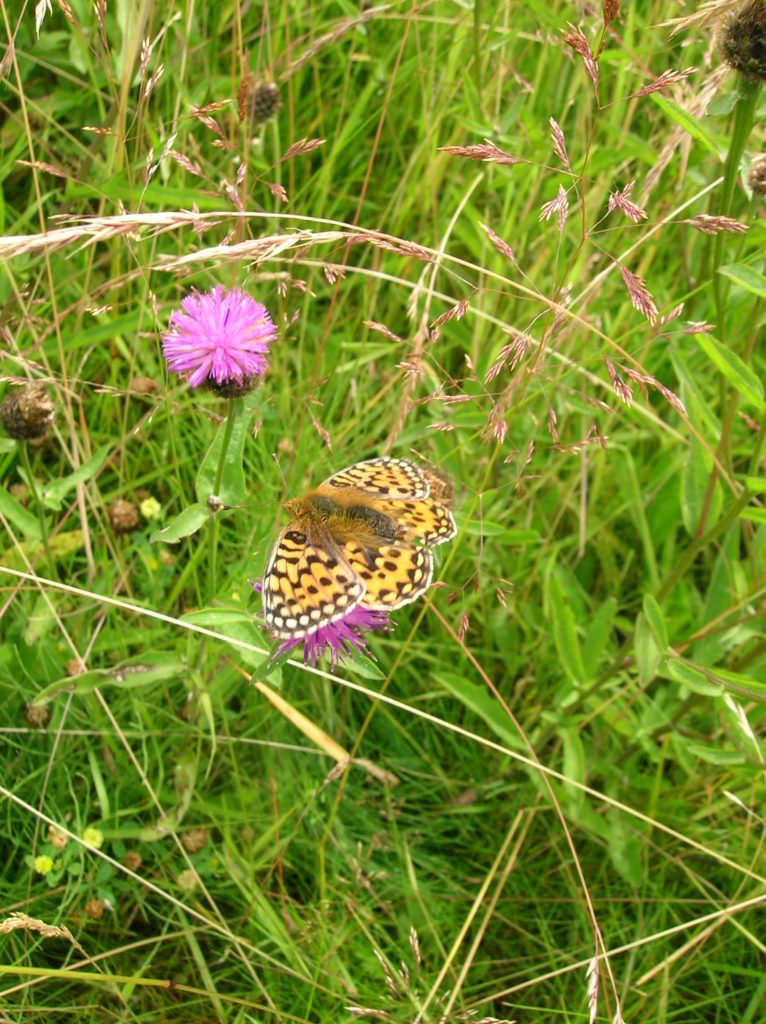
Dark Green Fritillary, knapweed
Vision to action
Our vision is of a healthier mix of sand dune habitats, a re-invigorated ecosystem which is more self-sustaining. We are planning a gradual approach, clearing around three hectares of gorse over approximately five years. This will connect the two remaining areas of high quality sand/shingle habitat with each other, and with the open dunes beyond – restoring the dynamic natural ecological process of wind-blown sand. We will employ recognised best practice techniques in sand dune restoration, using a specialist machine, as the work is beyond the scope of hand tools or work parties. The Project is seeking to raise funding to pay for a contractor, and for project management and support.
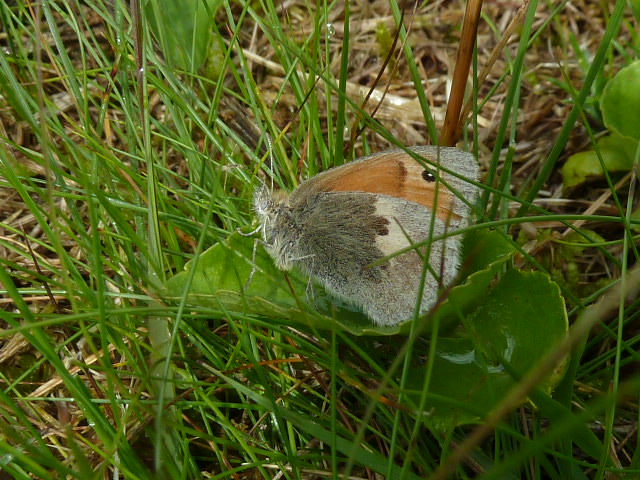
Small heath. Scottish Biodiversity List
We recognise the sensitivity of the area and the value which the local community and visitors place upon it. Without community and public understanding of the need for this work, it may appear to some to be destructive. Public consultation and information is a key part of the Project.
Sean Reed.
Findhorn Hinterland Trust Dune Restoration Project
LEARN MORE:
To learn more about the threats to wildlife species in the dunes, and how the FHT is planning to restore sand and shingle habits, please come along to this talk:
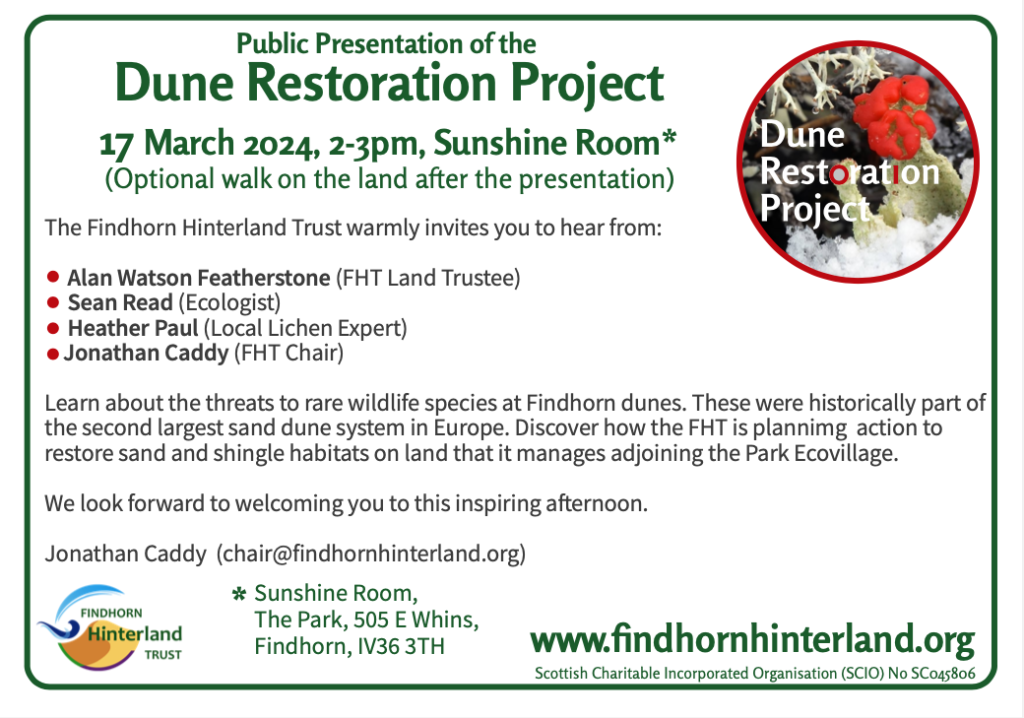

















Dune Restoration Project
Species rich grassland (Scottish Biodiversity List)
Maintaining and protecting biodiversity in our world is of international importance and concern and the strategy is to make sure that what happens on the ground in every locality of the earth helps with this mammoth task. To that end FHT commissioned a 2020 Local Biodiversity Action Plan that highlighted what habitats and species are particularly rare and important to conserve on the land it manages and from that it was clear that the dune habitat is of prime importance. How can we maintain and enhance this diversity?
Common blue
The Trust has engaged Sean Reed, a local ecologist, to plan our dune restoration work. The following outline gives a little more detail on the Project. Sean introduced our land management group to the Dynamic Dunescapes publication which has helped inform our thinking and which some readers may find interesting and informative.
Jonathan Caddy
FHT Chair
Project Outline
by Sean Reed MCIEEM
A very special place
Findhorn sand dune ecosystem, once part of the second largest in Europe, is of national importance for lichens, insects and fungi. Many species found here are found at only a handful of places in the UK. For example, Findhorn dunes have the only British record for one species of fungus and the dunes are the most important site for a moth which is found at only one other site in Scotland. Coastal vegetated shingle is included on the Scottish government’s Scottish Biodiversity List of priority habitats.
Dune heath
Under threat
Natural sand dune landscapes are now rarely seen in Europe. They have been lost through the establishment of forestry plantations, housing and industrial developments, caravan parks and golf courses.
Dune heath, sand
Over-stabilisation, through increasing vegetation cover, is a major threat to UK dunes. At Findhorn, dynamic open sand dune habitats, dependent on a plentiful supply of mobile sand, are being lost to gorse and tree encroachment. While this landscape may look wild and natural, it is actually the result of reduced wind speed, caused by the historic construction of houses and planting of woodland. This wind-sheltering effect has allowed gorse to spread, further restricting the natural flow of the wind. Pine trees, from seeds blown from adjoining plantation woodland, add to the problem, so that without action much of the special wildlife interest of the area will soon disappear.
Dune heath, shingle. Scottish Biodiversity List
Our responsibility
The Findhorn Hinterland Trust manages thirty-five hectares of the Findhorn dunes, including ten hectares of woodland. Most of the dune heath is now covered by gorse. Rare sand and shingle habitats, the ‘jewels in the crown’ of Hinterland’s biodiversity, are dependent on regular hand clearance of scrub for their continued existence.
Sand dune habitats, and many of the species that depend upon them for survival, are included on the Scottish Biodiversity List. These are the highest priorities for conservation action, helping to deliver on international targets for cooperative biodiversity recovery. We have a duty to respond to the biodiversity crisis on the land which we care for.
Dark Green Fritillary, knapweed
Vision to action
Small heath. Scottish Biodiversity List
We recognise the sensitivity of the area and the value which the local community and visitors place upon it. Without community and public understanding of the need for this work, it may appear to some to be destructive. Public consultation and information is a key part of the Project.
Sean Reed.
Findhorn Hinterland Trust Dune Restoration Project
LEARN MORE:
To learn more about the threats to wildlife species in the dunes, and how the FHT is planning to restore sand and shingle habits, please come along to this talk: